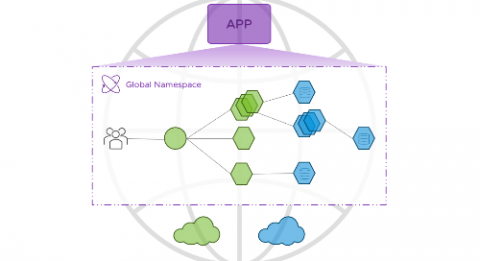Operations | Monitoring | ITSM | DevOps | Cloud
VMware Tanzu
Introducing VMware Tanzu Community Edition: Simple, Turnkey Access to the Kubernetes and Cloud Native Ecosystem
Open source is the foundation on which Tanzu stands, and we take inspiration not only from the engineering community, but also from the end-user community that has taken an upstream-first approach to deploy cloud native technologies in production. As with many things Kubernetes-centric, it is still quite challenging to operationalize a pure, clean, open source–only, upstream-aligned platform for enterprise use. We are looking to change that with VMware Tanzu Community Edition.
VMware Tanzu Kubernetes Grid Now Supports GPUs Across Clouds
While AI workloads are becoming more pervasive, challenges with deploying AI have slowed adoption. Blockers like data complexity, data silos, and lack of infrastructure contribute to the difficulty of deploying AI workloads, and to address these issues, organizations need an integrated, scalable, and high-performing solution.
Introducing VMware Tanzu Community Edition
Today is a big day for the Tanzu team at VMware. It’s a day we’ve long been looking forward to, and a day that we’d like to celebrate with you. Just this morning we released VMware Tanzu Community Edition, a freely available, community-supported, open source distribution of VMware Tanzu that you can install and configure in minutes on your local workstation or your favorite cloud. This release is big news for us, and exciting news for you too!
Treating Security Like a Product at the U.S. Army Software Factory
Security is a constant concern for businesses large and small, public and private. Data breaches and software supply chain attacks are occurring more and more frequently. A growing gap in the cybersecurity workforce is hampering security efforts in every type of organization. And with the average cost of a data breach currently at $4.24 million, leaders have significant motivation to look for new and innovative ways to mitigate cybersecurity risk in their organizations.
Modern SRE Practices for Incident Management
At VMware, we make use of modern development and site reliability engineering (SRE) practices on a regular basis. And those of us who work on the VMware Tanzu Observability product marketing team regularly get exposure to various SRE teams that implement modern practices with the observability technology we create.
Tracing Issues in Your Application
Application Resiliency for Cloud Native Microservices with VMware Tanzu Service Mesh
Modern microservices-based applications bring with them a new set of challenges when it comes to operating at scale across multiple clouds. While the goal of most modernization projects is to increase the velocity at which business features are created, with this increased speed comes the need for a highly flexible, microservices-based architecture. The result is that the architectural convenience created on day 1 by developers turns into a challenge for site reliability engineers (SREs) on day 2.
Kubernetes, Give Me a Queue
A few months ago, we introduced a new messaging topology operator. As we noted in our announcement post, this new Operator—we use the upper-cased “Operator” to denote Kubernetes Operators vs. platform or service human operators—takes the concept of VMware Tanzu RabbitMQ infrastructure-as-code another step forward by allowing platform or service operators and developers to quickly create users, permissions, queues, and exchanges, as well as queue policies and parameters.
Driving Business Agility Without Large-Scale Transformation Programs
The agile transformation services market will grow at a compounded rate of 19.5 percent annually by 2026, according to Allied Market Research. The overall digital transformation services market, meanwhile, is estimated by Forbes to be worth trillions of dollars. Indeed, if we scroll through the annual reports of Fortune 500 companies over the last decade, many of them will detail going through some version of a digital transformation.








